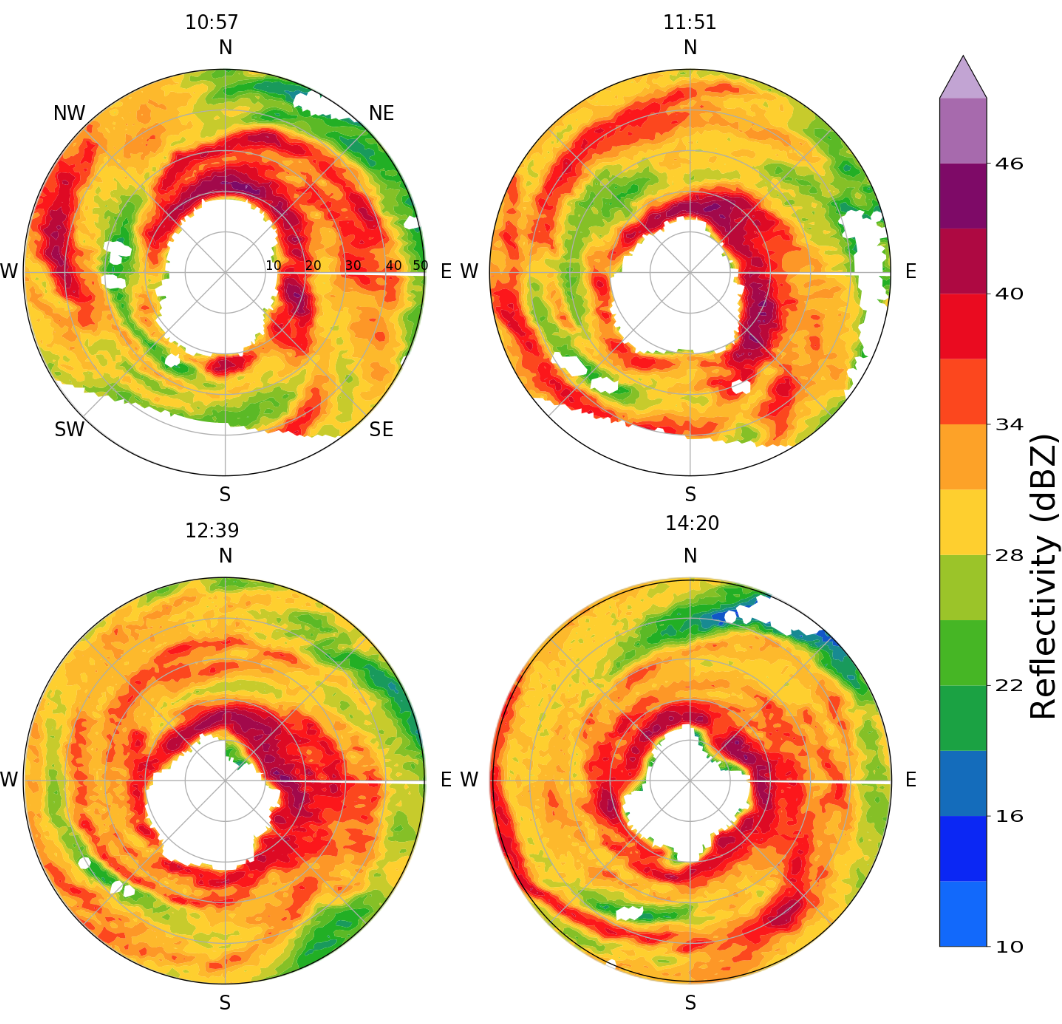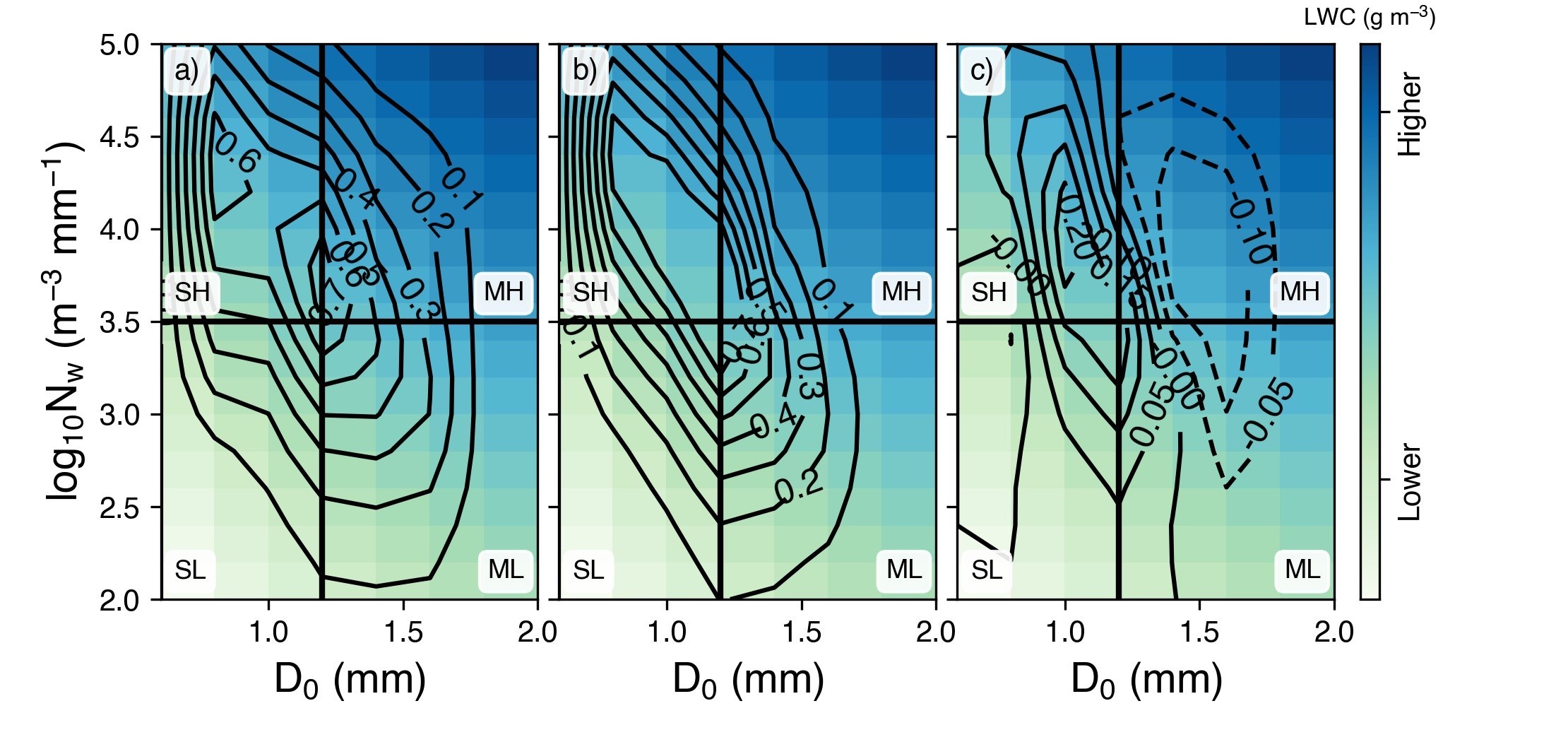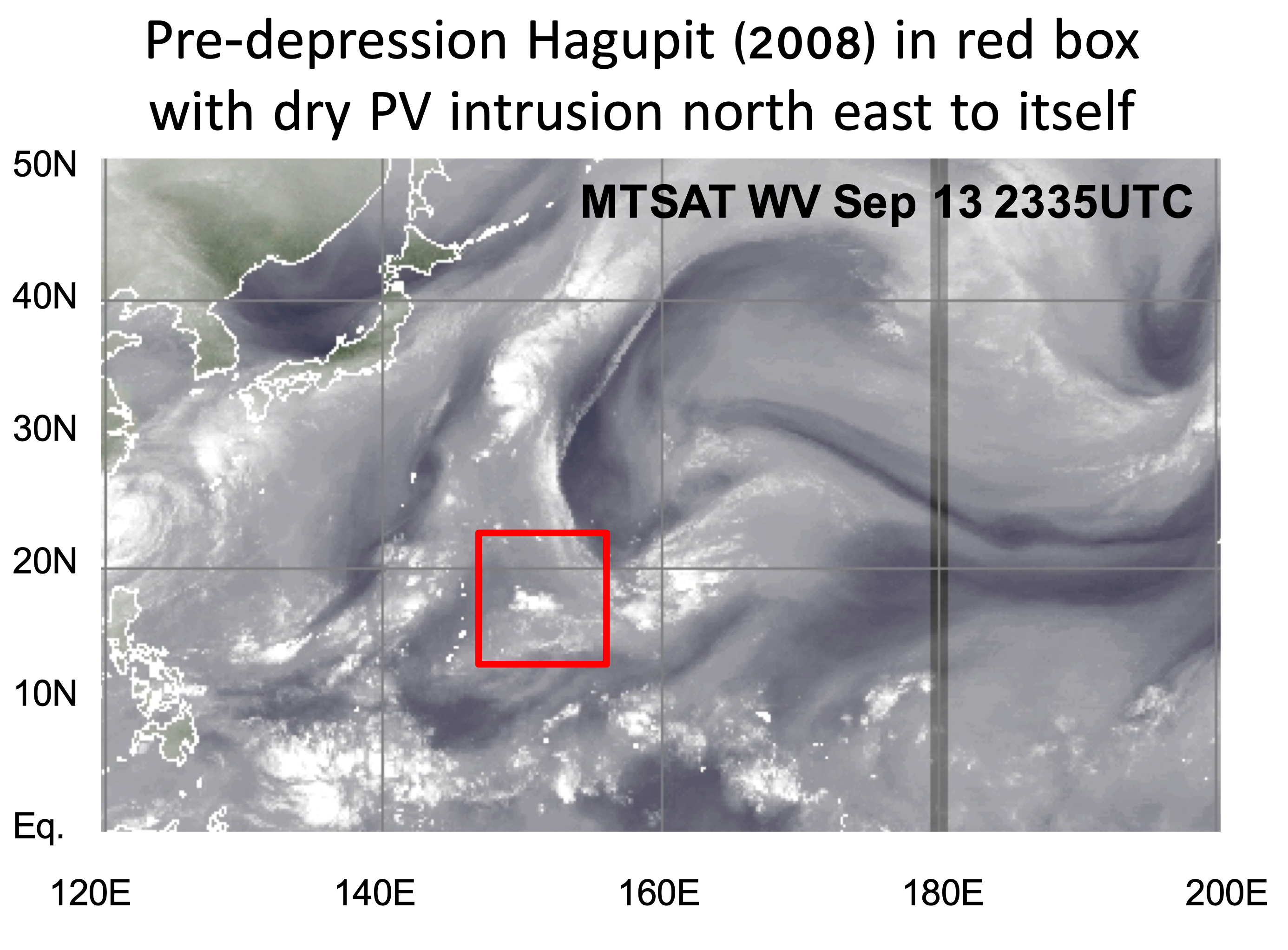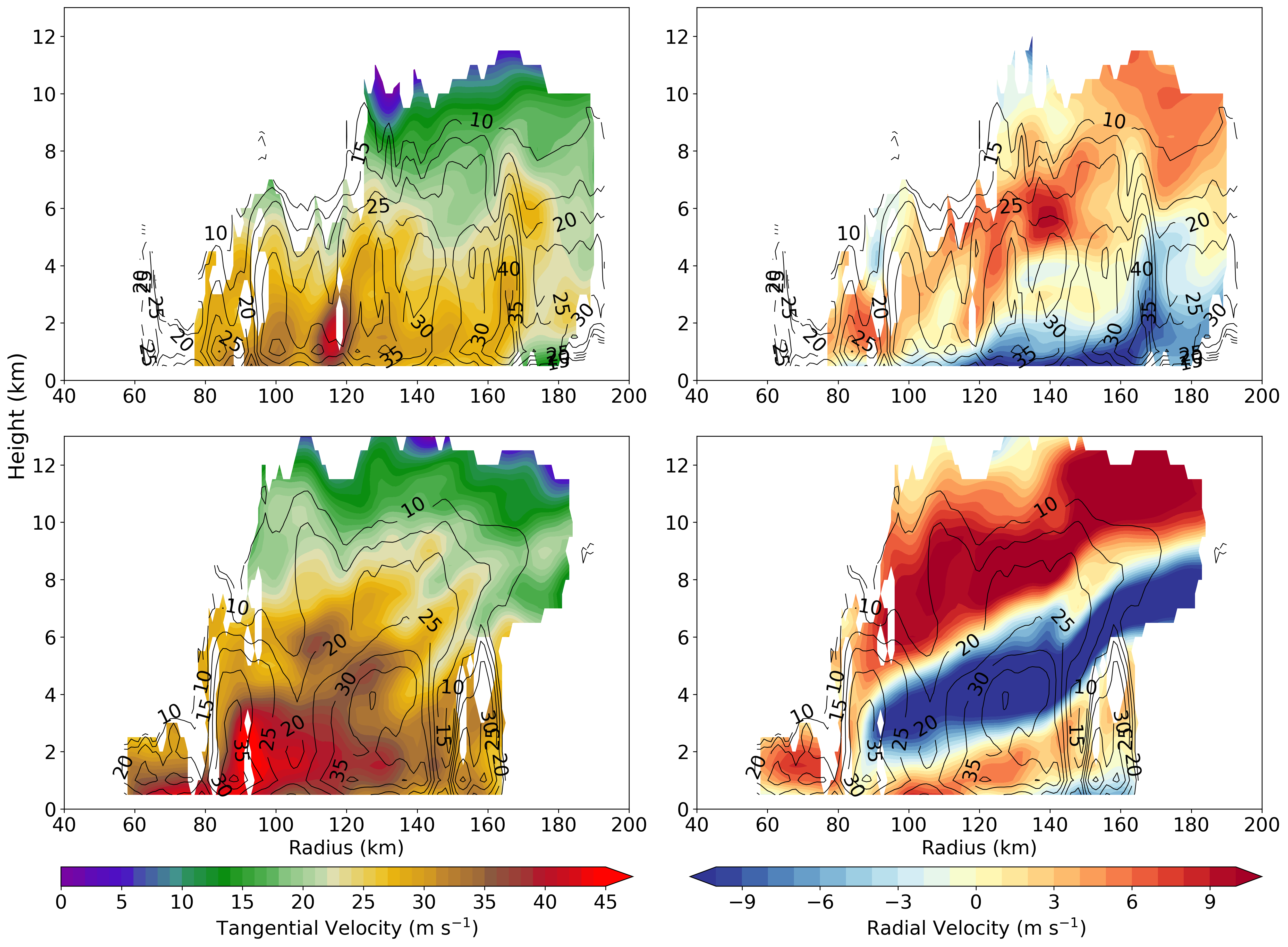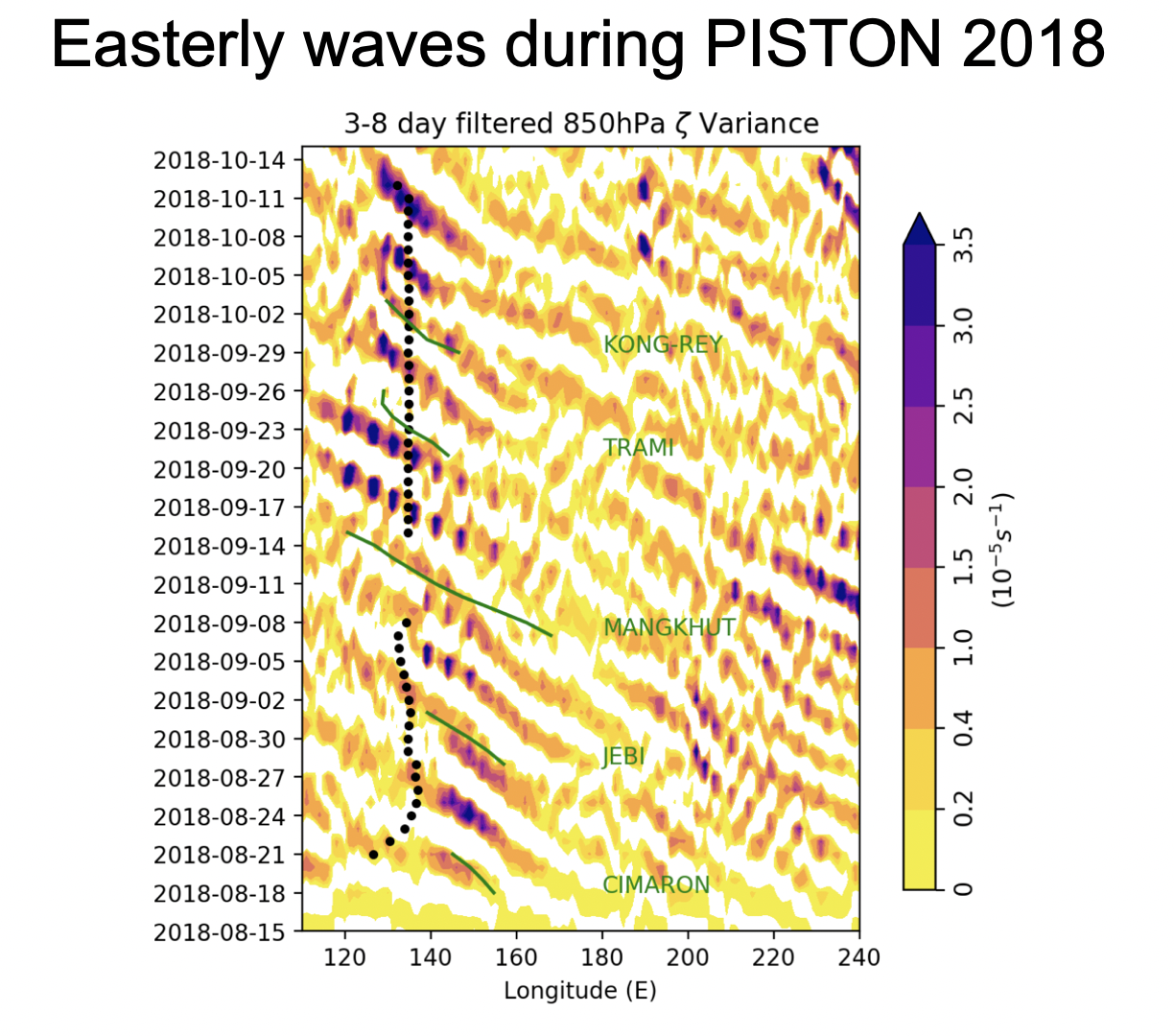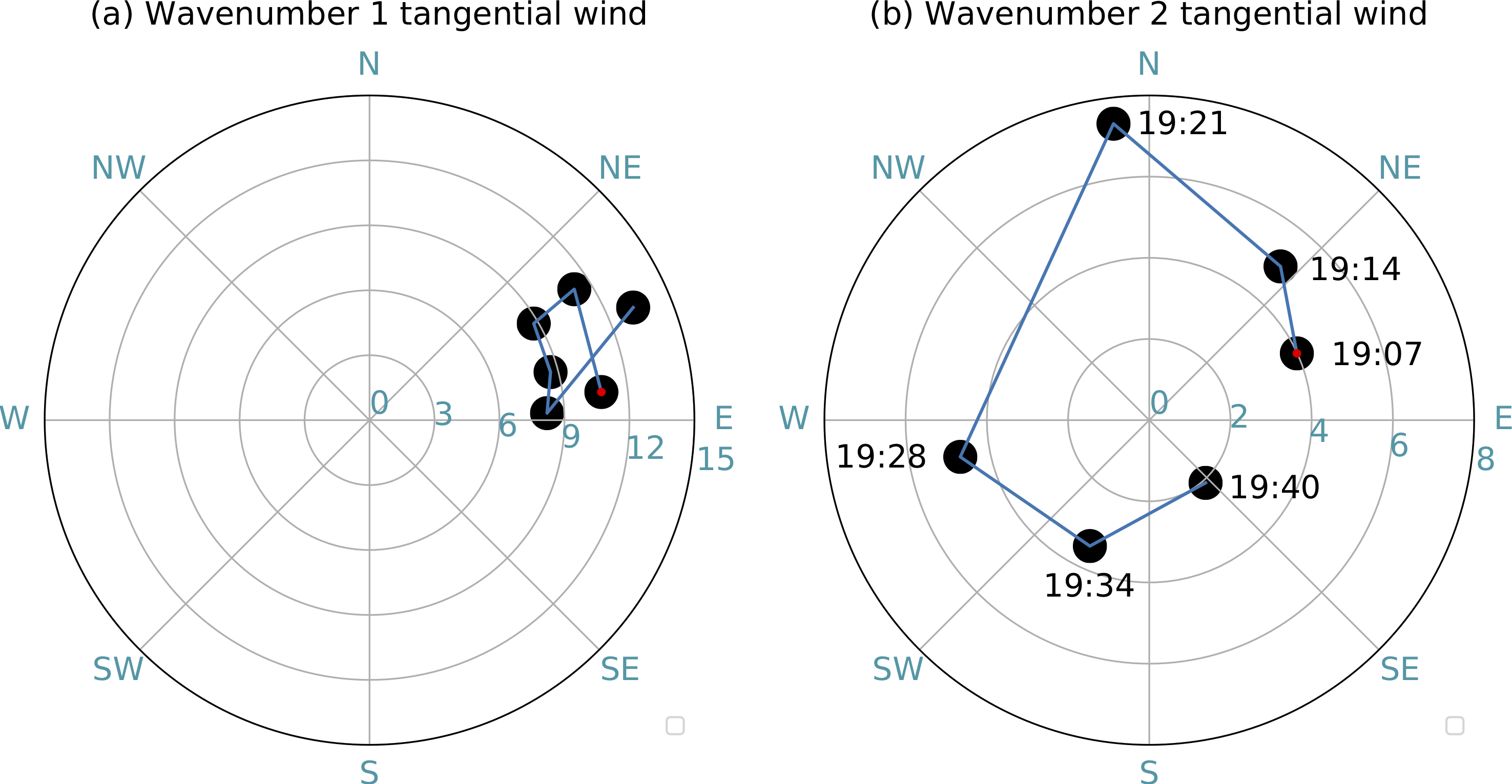Are the asymmetric dynamics of Hurricane Michael (2018) polygonal eyewall consistent with vortex Rossby wave (VRW) theory?
Group Members: Ting-Yu Cha , Michael M. Bell , Alex DesRosiers
While polygonal eyewall shapes have been seen in previous hurricanes, the corresponding evolution of wind asymmetries has never been quantitatively deduced due to limitations from previous observations. Here we show the first observational evidence of the evolving wind field of a polygonal eyewall during RI to Category 5 intensity by deducing the winds at 5-minute intervals from single-Doppler Next Generation Weather Radar (NEXRAD) observations. The single Doppler radar analysis shows that the propagation speeds of different VRWs are consistent with linear wave theory.
